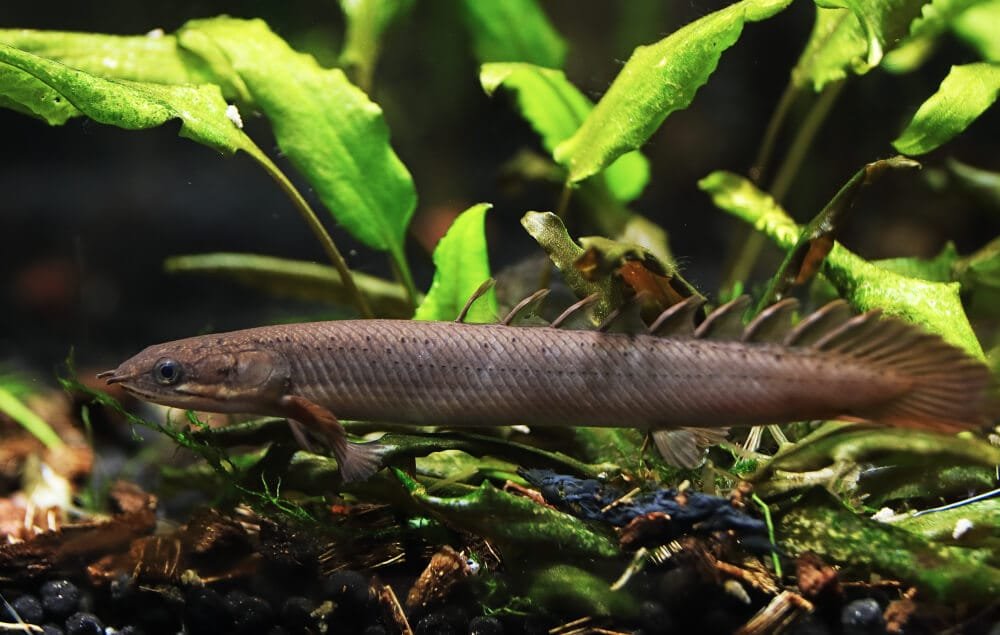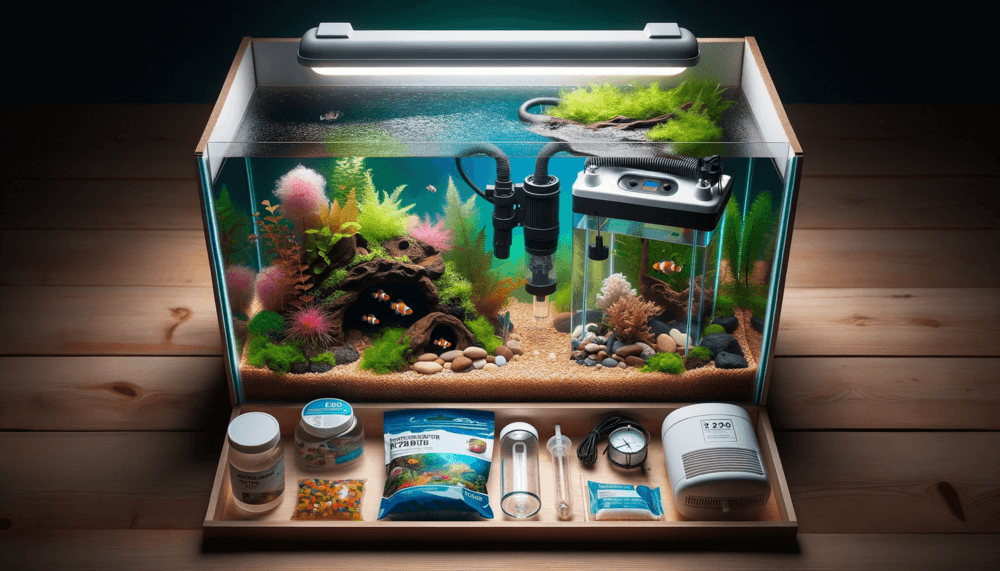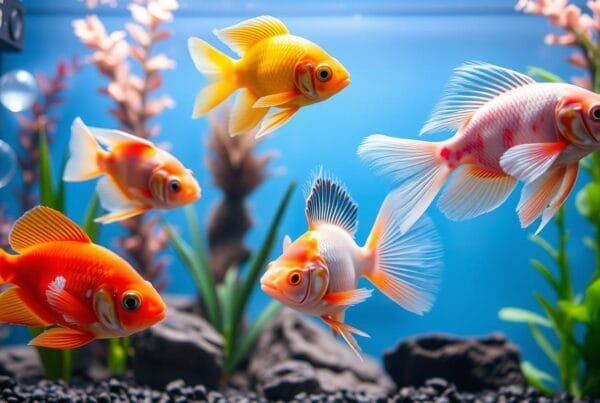Have you ever wondered what the perfect water conditions are for a saltwater tank? Ensuring your tank has the ideal water parameters is crucial for the health and well-being of your marine life. From the correct levels of salinity and pH to the appropriate temperature and nutrient balance, understanding and maintaining these key factors will help create a thriving and vibrant aquatic environment. In this article, we will explore the essential water parameters you need to consider when setting up and maintaining a saltwater tank. Get ready to dive into the fascinating world of marine aquariums!
Temperature
Importance of Temperature
Maintaining the proper temperature in your saltwater tank is crucial for the overall health and well-being of your marine life. Temperature affects various physiological processes and biochemical reactions within the tank. It directly influences the metabolism, immune system, and reproductive capabilities of your aquatic organisms.
Ideal Temperature Range
The ideal temperature range for a saltwater tank typically falls between 75 to 82 degrees Fahrenheit (24 to 28 degrees Celsius). This range closely mimics the natural habitats of many saltwater species, ensuring their comfort and promoting their natural behaviors. However, it is essential to research the specific temperature requirements of the marine organisms you plan to house in your tank for optimum results.
Heating and Cooling
To maintain a stable temperature within your saltwater tank, you may need to invest in heating or cooling equipment. Depending on your local climate conditions, you may need a heater to increase the temperature or a chiller to lower it. These devices help you regulate the temperature and provide a consistent and suitable environment for your marine inhabitants.
Salinity
Importance of Salinity
Salinity, the concentration of dissolved salts in water, is a vital aspect to monitor in your saltwater tank. It plays a crucial role in osmoregulation, maintaining the balance of water and salts within the marine organisms’ bodies. Proper salinity levels promote healthy cell function, osmotic balance, and normal physiological processes.
Ideal Salinity Level
The ideal salinity level for a saltwater tank is typically measured in parts per thousand (ppt). Most reef aquariums aim for a salinity range of 34 to 36 ppt, which closely resembles the salinity of natural seawater. It is crucial to regularly test and adjust the salinity to ensure it remains within this optimal range and provides a suitable environment for your marine life.
Measuring Salinity
To measure the salinity of your saltwater tank accurately, you can use a refractometer or a hydrometer. Refractometers are more precise and reliable, providing readings in ppt or specific gravity. Hydrometers, although less accurate, can still offer valuable insights into the salinity level. Regular monitoring of salinity allows you to make necessary adjustments using water additives or freshwater top-offs to maintain the desired salinity range.
pH
Importance of pH
pH refers to the level of acidity or alkalinity in your saltwater tank. Maintaining a proper pH level is essential for the health and survival of your marine organisms. pH influences the efficiency of biological processes, nutrient availability, and the overall stability of the tank’s ecosystem.
Ideal pH Range
The ideal pH range for a saltwater tank typically falls between 8.1 to 8.4. This range ensures the optimal functionality of biological processes and supports the growth and development of your marine life. Fluctuations in pH levels can cause stress and harm to your organisms, so it is crucial to monitor and control the pH within this ideal range.
Controlling pH
To control the pH in your saltwater tank, you need to regularly test the water using a pH test kit. If the pH is outside the ideal range, you can make necessary adjustments using pH buffers or additives specifically designed for aquarium use. It is important to follow the instructions carefully and make gradual changes to avoid sudden pH shifts that can be detrimental to the tank’s inhabitants.
Ammonia
Importance of Ammonia
Ammonia is a toxic compound that can accumulate in your saltwater tank if not properly managed. It is primarily produced through the biological waste of your marine organisms and decaying organic matter. High levels of ammonia can cause severe health issues, including stress, tissue damage, and even death in extreme cases.
Safe Ammonia Levels
Ideally, the ammonia level in your saltwater tank should be undetectable. Even low concentrations of ammonia can be harmful to your marine life. Regular testing using a reliable ammonia test kit is crucial to ensure that harmful levels are not present. If ammonia is detected, immediate action should be taken to rectify the situation and eliminate the source of ammonia.
Removing Ammonia
To remove ammonia from your saltwater tank, several options are available. One effective method is the use of biological filtration, which utilizes beneficial bacteria to convert ammonia into less toxic substances such as nitrite and nitrate. Additionally, performing regular water changes, reducing feeding amounts, and properly maintaining the tank’s filtration system can help prevent and remove ammonia buildup.
Nitrate
Importance of Nitrate
Nitrate is a byproduct of the nitrogen cycle in your saltwater tank. While it is less toxic than ammonia or nitrite, high nitrate levels can still negatively impact your marine organisms’ health. Excessive nitrate can lead to poor water quality, decreased growth rates, and increased susceptibility to diseases.
Acceptable Nitrate Levels
The acceptable nitrate level in a saltwater tank typically falls below 20 parts per million (ppm). Regular testing using a nitrate test kit allows you to monitor the nitrate levels and take appropriate action if it exceeds the acceptable range. Maintaining optimal nitrate levels ensures the growth and well-being of your marine life.
Reducing Nitrate
To reduce nitrate levels in your saltwater tank, various methods can be employed. Implementing an efficient biological filtration system, including live rock or live sand, can help convert nitrate into harmless nitrogen gas through the denitrification process. Additionally, regular water changes, proper maintenance of filtration media, and maintaining a balanced feeding regime can aid in reducing nitrate buildup.
Nitrite
Importance of Nitrite
Nitrite is an intermediate compound in the nitrogen cycle and is highly toxic to marine organisms. It is commonly produced during the initial stages of establishing a saltwater tank or after a disruption in the biological filtration system. Elevated nitrite levels can lead to severe health issues and even result in fish deaths.
Safe Nitrite Levels
Ideally, the nitrite level in your saltwater tank should be undetectable. Any presence of nitrite can cause stress to your marine life and compromise their immune system. Regular testing using a nitrite test kit allows you to monitor nitrite levels closely and take immediate action if a spike occurs.
Eliminating Nitrite
To eliminate nitrite from your saltwater tank, establishing a healthy and robust biological filtration system is vital. Beneficial bacteria will convert nitrite into less harmful nitrate through the process of nitrification. Monitoring and maintaining proper water parameters, performing regular water changes, and ensuring proper maintenance of your tank’s filtration system are important steps in preventing or eliminating nitrite spikes.
Calcium
Importance of Calcium
Calcium is an essential element for the growth and development of many marine organisms, particularly coral and other invertebrates. It plays a crucial role in the formation of their skeletons, shells, and overall structural integrity. Maintaining proper calcium levels in your saltwater tank promotes healthy coral growth and enhances the vibrant colors of your reef ecosystem.
Ideal Calcium Levels
The ideal calcium level in a saltwater tank usually ranges between 380 to 450 parts per million (ppm). Monitoring calcium levels through regular testing is crucial to ensure that the necessary amount is present for the optimal growth and well-being of your marine life.
Supplementing Calcium
Supplementing calcium in your saltwater tank can be done using various methods. Calcium additives, such as calcium chloride or calcium carbonate, can be used to increase calcium levels when necessary. It is important to follow the manufacturer’s instructions and conduct regular testing to maintain the proper calcium balance, as both excessive and insufficient calcium can have detrimental effects on your marine organisms.
Magnesium
Importance of Magnesium
Magnesium is another essential element for a healthy saltwater tank, as it plays a vital role in many physiological processes. It influences coral growth, the formation of skeletal structures, and the regulation of pH and calcium levels. Maintaining proper magnesium levels is crucial for the overall stability and well-being of your marine ecosystem.
Optimal Magnesium Levels
The optimal magnesium level in a saltwater tank is generally between 1,250 to 1,350 parts per million (ppm). Regular monitoring of magnesium levels through testing allows you to ensure that the appropriate concentration is available for your marine organisms.
Magnesium Supplements
If magnesium levels are found to be insufficient, various magnesium supplements can be used to raise the concentration within the desired range. Magnesium chloride and magnesium sulfate are commonly used additives that help maintain optimal magnesium levels. It is essential to carefully follow the recommended dosage and conduct regular testing to avoid imbalances in the tank’s water chemistry.
Alkalinity
Importance of Alkalinity
Alkalinity refers to the water’s ability to resist changes in pH levels. Maintaining proper alkalinity is crucial for stabilizing pH, supporting coral growth, and providing a healthy environment for your marine organisms. It acts as a buffer, preventing sudden and detrimental pH shifts that can negatively impact the tank’s inhabitants.
Recommended Alkalinity Levels
The recommended alkalinity level in a saltwater tank generally falls between 8 to 12 dKH (degrees of carbonate hardness). This range ensures the stability and resilience of your tank’s ecosystem. Regular testing using an alkalinity test kit allows you to monitor the alkalinity levels and make any necessary adjustments.
Balancing Alkalinity
To balance and maintain alkalinity levels within the recommended range, alkalinity buffers or additives can be employed. These products help maintain the desired alkalinity and prevent drastic pH fluctuations. It is important to carefully follow the manufacturer’s instructions and perform regular testing to ensure a stable alkalinity level in your saltwater tank.
Trace Elements
Importance of Trace Elements
Trace elements are essential micronutrients required in small quantities for the health and growth of marine organisms. These elements play diverse roles in biological processes and biochemical reactions within the saltwater tank. Proper trace element levels ensure the thriving of coral, invertebrates, and other delicate marine life.
Essential Trace Elements
Some essential trace elements for a saltwater tank include iodine, iron, strontium, manganese, and zinc. These micronutrients support various physiological functions, such as pigmentation, calcification, and enzyme activities. Regular testing of trace elements and supplementation using specialized additives can help maintain their optimal levels for the well-being of your marine ecosystem.
Adding Trace Elements
Adding trace elements to your saltwater tank can be done through commercially available supplements designed specifically for marine aquariums. These supplements contain a balanced blend of essential trace elements that can be added directly to the tank or dosed into the system through a controlled manner. Following the manufacturer’s instructions and regular monitoring of trace element levels will ensure their appropriate presence in your saltwater tank.
In conclusion, maintaining the ideal water parameters in your saltwater tank is crucial for the health and well-being of your marine life. Temperature, salinity, pH, ammonia, nitrate, nitrite, calcium, magnesium, alkalinity, and trace elements all play significant roles in maintaining a thriving and vibrant marine ecosystem. Regular testing, monitoring, and appropriate adjustments will help ensure a suitable and stable environment for your saltwater tank’s inhabitants. Remember, a little effort in maintaining optimal water parameters will go a long way in creating a beautiful and healthy underwater world.





